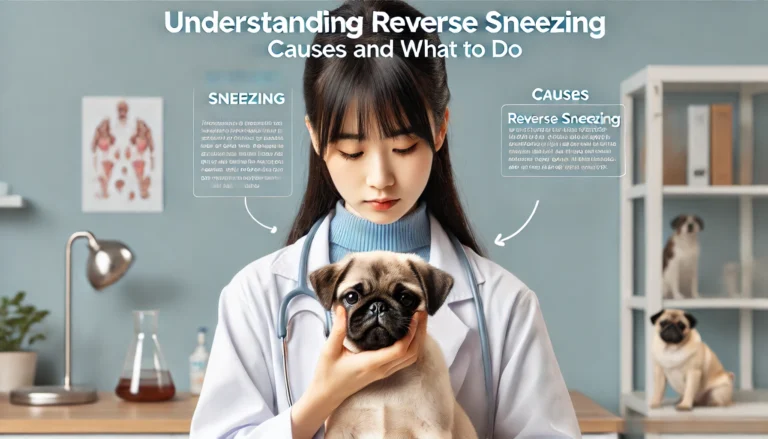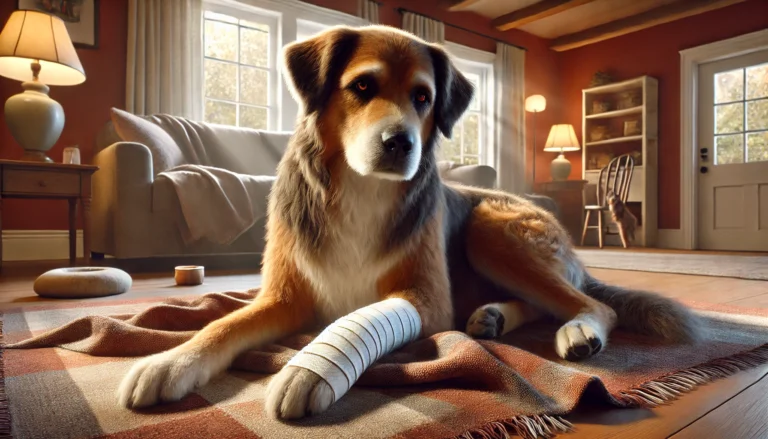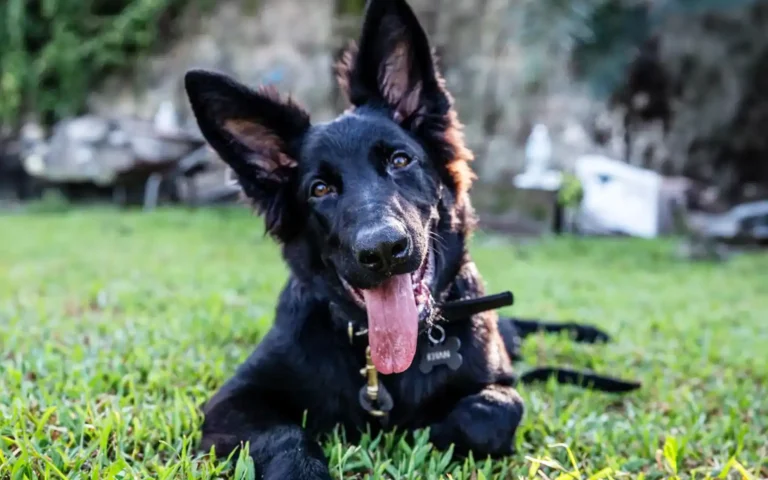Botfly in Dogs: Essential Symptoms, Causes and Treatment Guide
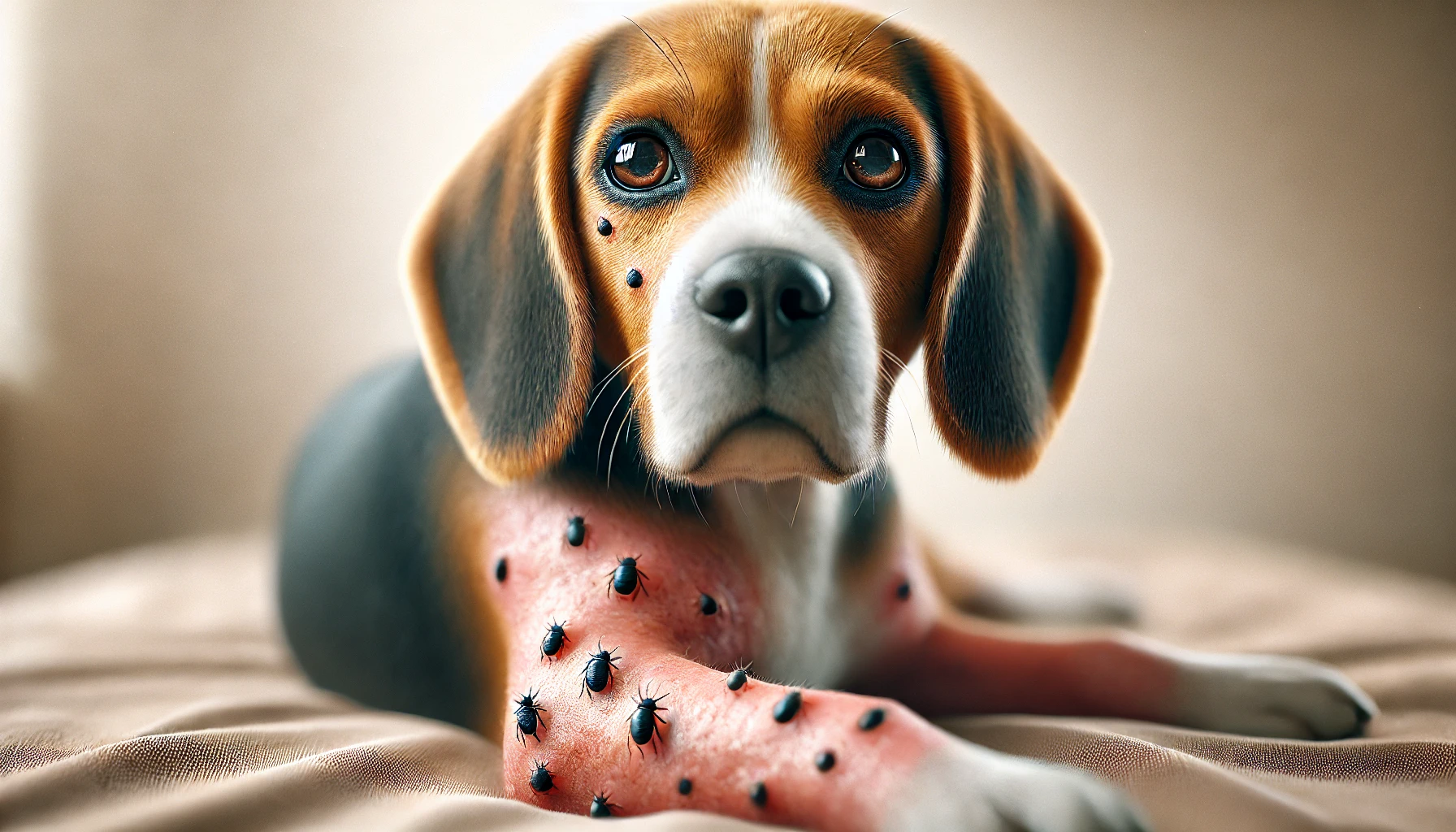
Botflies, also known as Cuterebra, warble flies, or wolf worms, are parasites that can cause distress and health issues in dogs. These parasites live under the skin of various animals, including dogs, creating noticeable, often painful lumps. Botfly infestations are more common in outdoor pets and those that venture into fields, wooded areas, or places where small animals live. This guide will cover everything you need to know about botflies in dogs, from the symptoms and diagnosis to treatment, prevention, and recovery.
What Is a Botfly in Dogs?
Botflies, or Cuterebra, are a type of parasitic fly with a unique life cycle. They typically lay their eggs near the entrance of burrows or trails where small animals, like rodents and rabbits, live. When a dog, cat, or another animal comes into contact with the eggs, the eggs hatch, and the larvae quickly attach to the new host. These larvae burrow under the skin, causing raised lumps that can be quite painful. They mature in these lumps, known as “warbles,” over a few weeks, eventually exiting to complete their lifecycle.
The condition caused by botfly larvae under the skin of animals is referred to as “myiasis.” Dogs are not the botfly’s primary hosts, but they can become infected when they venture near infested areas.
Signs and Symptoms of Botfly Infestation in Dogs
Recognizing the signs of a botfly infestation in your dog is key to getting timely treatment. One of the most noticeable symptoms is the presence of a visible lump under the skin, often with a small breathing hole. This lump may cause discomfort and can even become infected if left untreated.
Common symptoms of botfly infestation include:
- Lumps or Swelling: Botfly larvae create a raised lump under the skin where they reside, which often appears red or swollen.
- Visible Breathing Hole: This is a distinct feature of botfly infestations. The hole allows the larvae to breathe as they develop.
- Discharge: The area may produce pus or fluid if an infection develops.
- Pain or Discomfort: The presence of a botfly can be painful, especially if the lump becomes infected.
- Behavioral Changes: Some dogs may become lethargic or irritable due to the discomfort caused by the botfly larvae.
In rare cases, if the larvae migrate to other parts of the body, such as the respiratory system or brain, more severe symptoms like seizures, breathing issues, or behavioral changes can occur.
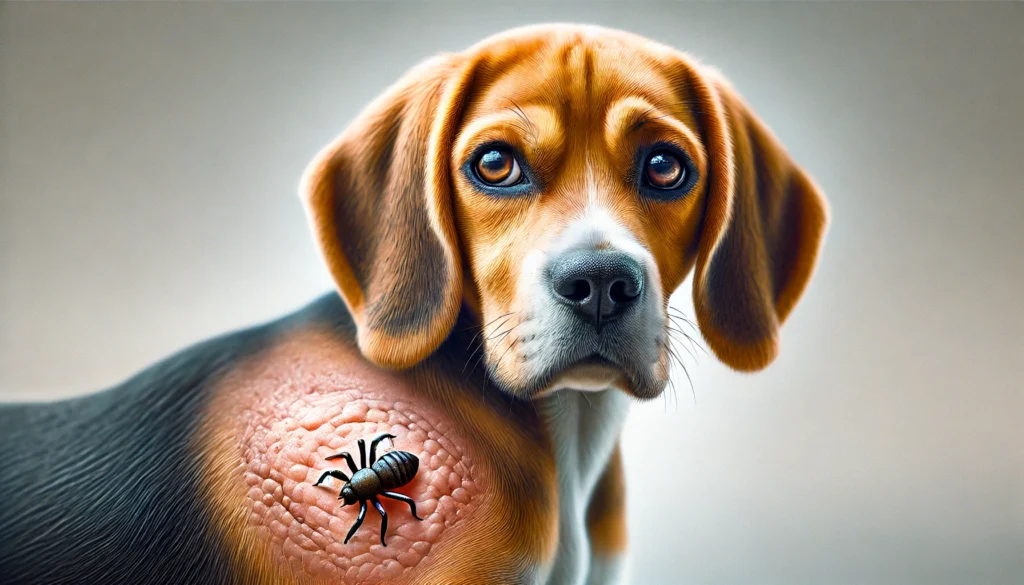
Lifecycle of the Botfly and How it Affects Dogs
The botfly has a unique and complex lifecycle that starts with eggs laid near animal burrows. Here’s a detailed breakdown:
- Egg Laying: Female botflies lay their eggs near the entrance to small animal burrows, often close to the ground where they can easily attach to animals that brush against them.
- Hatching and Attachment: When a warm-blooded animal, such as a dog, passes by, the eggs hatch, and the larvae attach to the animal’s fur or skin.
- Larval Penetration: The larvae penetrate the skin through natural openings like the mouth, nose, or even open wounds, or they may directly burrow into the skin.
- Maturation Under the Skin: Once inside the skin, the larvae grow over several weeks, developing into large lumps or “warbles.”
- Exit and Pupation: After maturing, the larvae create an exit hole, leave the host, and fall to the ground, where they complete their lifecycle by pupating and turning into adult flies.
Dogs that roam or spend time in wooded areas, fields, or near animal burrows are at a higher risk of encountering botflies. Active, outdoor-loving breeds and hunting dogs may be especially prone to picking up botfly eggs.
Diagnosing a Botfly Infestation in Dogs
Diagnosing a botfly infestation in dogs is often straightforward due to the unique symptoms associated with the parasite. A veterinarian typically performs a physical exam to confirm the presence of botfly larvae.
Steps in diagnosing a botfly infestation:
- Physical Examination: The vet will examine the dog for lumps that may have a visible breathing hole, a characteristic indicator of a botfly larva.
- Fine Needle Aspiration: In some cases, the vet may take a small sample from the lump to confirm the diagnosis.
- Imaging: If there is suspicion that larvae have migrated internally (rare but possible), the vet may order imaging tests, such as X-rays or MRIs, to locate the larvae.
Treatment Options for Botfly Infestation in Dogs
Treating a botfly infestation in dogs primarily involves removing the larvae and treating the resulting wound to prevent infection.
Treatment Process:
- Larvae Removal: A veterinarian will remove the larvae through a small incision, taking great care not to rupture the larva, as this can lead to severe inflammation and infection. Squeezing the lump or attempting removal at home is not advised, as improper handling can cause complications.
- Wound Cleaning and Disinfection: Once the larva is removed, the vet will clean and disinfect the area to prevent infection.
- Antibiotics and Anti-Inflammatories: Depending on the severity, your dog may be prescribed antibiotics to prevent bacterial infections, along with anti-inflammatory medication to reduce swelling and ease discomfort.
- Pain Management: If the infestation was severe or caused significant discomfort, pain management might be part of the treatment plan.
- Monitoring and Follow-Up: It’s essential to monitor the wound as it heals. A follow-up visit may be scheduled to ensure no complications arise.
Preventing Botfly Infestations in Dogs
Preventing botfly infestations involves taking steps to reduce your dog’s exposure to botfly eggs and larvae. Here are several methods:
- Limit Exposure to High-Risk Areas: If possible, avoid areas with animal burrows or known botfly activity, particularly during peak seasons.
- Inspect Your Dog Regularly: After spending time outdoors, check your dog’s skin for unusual lumps or bumps.
- Yard Maintenance: Keep your yard free of small mammals, such as rodents and rabbits, as botflies often lay eggs near their burrows.
- Protective Clothing: In areas with high botfly risk, consider using protective clothing designed for dogs to reduce the chance of contact with eggs.
- Consult Your Vet for Repellents: Some pet-safe repellents can help deter flies from your dog’s coat, although these are not always effective against botflies.
Different Dog Breeds and Botfly Susceptibility
Certain dog breeds are more susceptible to botfly infestations due to their behavior and lifestyle. Hunting breeds, such as Beagles, Retrievers, and Terriers, are at higher risk because they often roam in wooded or grassy areas. Long-haired breeds may have a slight advantage, as their dense fur can act as a barrier, though they are not immune.
Do You Know
Conjunctivitis, commonly known as pink eye, is one of the most frequent dog eye problems. This condition involves inflammation of the conjunctiva, the thin membrane that covers the inner eyelid and the white part of the eye. It can affect one or both eyes and is often caused by allergies, infections, or irritants.
Final Thoughts on Botfly in Dogs
Botflies are parasites that cause discomfort and health risks for dogs. Recognizing the signs early, seeking veterinary care, and following preventive measures are essential to keeping your dog safe. Regular skin checks, limiting access to high-risk areas, and prompt treatment if an infestation occurs can ensure your dog stays healthy and comfortable.
How do I know if my dog has a botfly?
If you suspect your dog has a botfly, look for a swelling or lump under their skin, often with a small hole in the center for the larva to breathe. This is a classic sign of a botfly in dogs. The affected area might be painful, and your dog may show signs of discomfort, such as excessive licking or scratching. Additionally, lethargy or changes in behavior could be noticeable. These symptoms are indicative of a botfly in dogs, which should prompt a visit to the vet for proper diagnosis and treatment.
What happens if a botfly is not removed?
If a botfly in dogs is not removed, the larvae can continue to grow under the skin, leading to irritation, infection, and tissue damage. Over time, the botfly larva may cause abscesses or more severe complications if bacteria enter the wound. In rare cases, a botfly in dogs can migrate to internal organs, such as the respiratory system or brain, which could lead to life-threatening issues. It’s crucial to remove the botfly in dogs promptly to avoid these serious health risks.
What kills bot flies?
There are several treatments that can kill botflies in dogs, including manual removal of the larvae by a veterinarian, which is the most effective method. Additionally, insecticides approved by veterinarians may help eliminate botflies in dogs by targeting the larvae. It is important to consult a vet before using any chemical treatments to ensure they are safe for your dog. Regular checks for signs of botfly in dogs and prompt removal can help keep these parasitic infestations under control.
Can a botfly make a dog sick?
Yes, a botfly in dogs can make a dog sick. The larvae cause discomfort and pain as they grow under the skin, leading to symptoms like swelling, redness, and infection. In severe cases, a botfly in dogs can cause systemic issues, such as fever and lethargy. If the larvae migrate internally, the dog may experience respiratory problems or neurological symptoms. Prompt treatment of a botfly in dogs is essential to prevent such complications.
How to remove a botfly from a dog?
To remove a botfly in dogs, you should take your dog to the veterinarian. The vet will make a small incision and carefully extract the larvae, ensuring it’s removed completely. It’s important not to try removing a botfly in dogs at home, as improper handling can cause the larva to rupture, leading to infection. After removal, the vet will clean the wound, apply antiseptics, and may prescribe antibiotics to prevent further complications associated with the botfly in dogs.
Do carrots deworm dogs?
While carrots can help with some digestive issues in dogs, they do not specifically deworm dogs or treat botfly in dogs. Carrots are often thought to help clear the digestive tract due to their fiber content, but they don’t effectively eliminate parasites like botflies. If your dog is suffering from botfly in dogs, it is important to consult your veterinarian for proper treatment and deworming options.
How do I protect my dog from botflies?
To protect your dog from a botfly in dogs, keep them away from areas where botflies are active, such as fields, woodlands, and burrowed environments. Regularly check your dog’s skin for lumps or bumps, especially after outdoor activities. You can also apply veterinarian-approved insect repellents to help keep botflies in dogs at bay. Reducing your dog’s exposure to wild animals that may carry botfly larvae is another way to prevent a botfly in dogs.
What attracts botflies?
Botflies in dogs are attracted to warm-blooded animals, including dogs, as hosts for their larvae. The botfly lays its eggs near animal burrows or in areas where small mammals are likely to be found, which also attracts botflies in dogs. Dogs that roam in these environments are at higher risk of coming into contact with botfly eggs. Keeping your dog away from these areas is essential in preventing botfly in dogs infestations.
How to avoid botfly?
To avoid a botfly in dogs, restrict your dog’s access to outdoor areas where botflies are most active, such as areas with tall grass, woods, or rodent burrows. Use insect repellents approved by your veterinarian to keep botflies in dogs away. Regularly inspect your dog for signs of botfly in dogs after being outside, and take immediate action if you notice lumps or swelling on their skin.
How to get rid of fly eggs on dogs?
To get rid of fly eggs on dogs, bathe and groom them regularly, especially after outdoor activities where botflies in dogs might be present. Remove fly eggs gently with a fine-tooth comb and wash the affected area thoroughly with dog-safe shampoo. If you suspect a botfly in dogs, consult your veterinarian for proper treatment, as fly eggs can lead to more severe conditions like myiasis if not treated.
Do botfly holes heal?
Yes, botfly in dogs holes can heal, but the process requires proper care and treatment. Once the larvae is removed, the area should be cleaned and disinfected to prevent infection. Most dogs recover without complications, and the skin will heal in a few weeks. However, if the botfly in dogs caused an infection, additional care and antibiotics may be needed for the wound to heal properly.
Can flies lay eggs in dogs’ skin?
Yes, flies can lay eggs in a dog’s skin, particularly if there is an open wound or an area with broken skin. These eggs can hatch into larvae, leading to a botfly in dogs infestation, also known as myiasis. Flies that lay eggs on open wounds may cause serious infections, which can lead to a botfly in dogs. Regular grooming and wound care are important to prevent this condition.
Does Vaseline remove botfly?
Using Vaseline to remove a botfly in dogs is not recommended. While some people suggest applying Vaseline to suffocate the larvae, this method is not effective and could lead to further complications, such as infection or deeper penetration of the larva. The safest and most effective way to remove a botfly in dogs is by visiting a veterinarian for proper extraction.
Why do dogs get botfly?
Dogs get a botfly in dogs when they come into contact with areas where botflies are active, such as grassy fields or wooded areas where wild animals or rodents may be present. These parasites target dogs as a host for their larvae. The risk of a botfly in dogs increases if the dog spends a lot of time outdoors in regions with high botfly activity.
What is a home remedy for botfly?
While there are no proven home remedies for a botfly in dogs, maintaining proper hygiene and wound care after a suspected infestation can help minimize secondary infections. It is always best to consult a veterinarian for safe and effective treatment, such as removing the larvae, cleaning the area, and prescribing any necessary medications to prevent further complications from a botfly in dogs.

